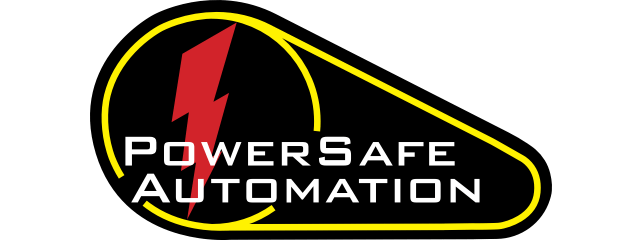While these older systems may still function, they are often plagued by limited processing speed, lack of manufacturer support, cybersecurity vulnerabilities, and compatibility issues with modern components.
This blog explores the top five benefits of upgrading legacy PLC systems and why a proactive modernization strategy is crucial for manufacturers seeking to improve machine reliability, future-proof operations, and stay compliant with evolving safety regulations.
1. Enhanced Machine Safety and Compliance
Modern PLCs offer native support for safety integration, including compatibility with safety-rated components like light curtains, emergency stops, and two-hand control modules. This allows for real-time monitoring of safety conditions and quicker response times in the event of a fault.
Legacy PLCs often require external safety relays or hardwired safety circuits that are difficult to validate and maintain. Newer systems are built with IEC 61508 and ISO 13849 compliance in mind, helping you achieve Performance Level (PL) or Safety Integrity Level (SIL) targets without adding complexity.
Key Advantages:
-
Built-in diagnostics and fault tracking
-
Easier validation for OSHA and ANSI compliance audits
-
Integration with safety PLCs reduces wiring and failure points
2. Improved Reliability and Reduced Downtime
Legacy PLCs are more prone to unexpected failures, especially due to component degradation, outdated firmware, or loss of supplier support. In contrast, modern PLCs are built for higher performance and better reliability, often with industrial-grade components and redundancy features that reduce unplanned downtime.
Spare parts for older systems are often discontinued, forcing companies to rely on aftermarket sources, refurbished units, or risky workarounds. Upgrading allows you to standardize on current technology and eliminate unplanned stoppages caused by obsolete hardware.
Key Advantages:
-
Elimination of unplanned downtime due to part failure
-
Improved MTBF (Mean Time Between Failures)
-
Long-term support from PLC manufacturers and integrators
3. Better Data Visibility and Industrial Networking
Modern PLCs come equipped with Ethernet/IP, Profinet, Modbus TCP, and OPC UA protocols, enabling seamless communication with HMIs, SCADA, MES, and cloud-based monitoring platforms.
Legacy PLCs often use proprietary or serial protocols that make data extraction challenging, if not impossible. As a result, managers miss out on real-time data that can improve OEE (Overall Equipment Effectiveness), energy usage, predictive maintenance, and production traceability.
Upgrading opens the door to Industry 4.0 and smart manufacturing by enabling scalable connectivity and analytics.
Key Advantages:
-
Real-time machine health monitoring
-
Seamless integration with MES and ERP systems
-
Enable predictive maintenance and IIoT readiness
4. Increased Flexibility for Future Modifications
One of the biggest bottlenecks with legacy PLCs is their lack of flexibility for updates. Even minor changes—like adding sensors or reprogramming logic—often require proprietary software, obsolete cables, or vendor-specific technicians.
Modern PLCs support modular programming platforms (like Rockwell Automation’s Studio 5000 or Siemens TIA Portal), allowing in-house engineers to make changes quickly, validate logic, and simulate scenarios without impacting live systems.
With better documentation tools and drag-and-drop logic structures, your team gains greater control over process changes, enabling faster improvements with less external dependence.
Key Advantages:
-
Easier to modify and scale automation logic
-
Intuitive development environments
-
Simulation and offline testing reduce commissioning time
5. Reduced Total Cost of Ownership (TCO)
Although upgrading may seem like a capital investment, it delivers significant long-term savings. The total cost of ownership (TCO) for legacy PLCs increases every year due to limited support, high maintenance labor, frequent failures, and energy inefficiencies.
Modern systems, in contrast, offer:
-
Lower maintenance costs
-
Energy-efficient operations
-
Standardization across lines and facilities, reducing training and spare part inventory
Additionally, modern PLCs are often paired with energy management tools, enabling better visibility into consumption patterns and waste. With advanced diagnostics and remote access, your technicians can also resolve issues without costly site visits or extended downtimes.
Key Advantages:
-
Fewer unplanned maintenance events
-
Lower risk of production loss due to failure
-
ROI within months from operational improvements
Bonus: Cybersecurity and Remote Access
Legacy PLCs were not built with cybersecurity in mind. In contrast, modern controllers are designed to meet ISA/IEC 62443 standards and can support encrypted communication, user role management, and secure remote access.
If your plant is exploring remote troubleshooting or cloud dashboards, this is a critical upgrade. Modern PLCs can support VPN tunneling, firewall integration, and security patches—protecting you from costly cyber incidents or breaches of proprietary data.
How to Plan a PLC Upgrade
Before diving into a full retrofit, consider these planning steps:
-
Assess your current control inventory – Identify all legacy PLCs and check manufacturer support status.
-
Prioritize critical machines – Start with production lines with high downtime impact or safety concerns.
-
Choose a standardized platform – Select PLC brands and models that match your plant-wide strategy.
-
Work with experienced integrators – Partner with safety-compliant automation firms like PowerSafe Automation for turnkey upgrades.
-
Train your internal team – Prepare engineering and maintenance staff to support the new architecture.
Why PowerSafe Automation?
At PowerSafe Automation, we specialize in helping manufacturers modernize outdated control systems with minimal disruption. Our team conducts on-site evaluations, safety risk assessments, and custom migration plans that ensure every upgrade improves both compliance and productivity.
We offer:
-
Turnkey control panel retrofits
-
PLC programming and validation
-
Functional safety integration (PL, SIL compliance)
-
Remote monitoring and diagnostics tools
Whether you're looking to improve operator safety, reduce unplanned downtime, or gain better process insight—upgrading your legacy PLCs is the foundation of future-ready manufacturing.
Conclusion: Modernization Is More Than a Trend—It's a Necessity
Staying competitive in modern manufacturing requires more than just keeping machines running. It demands safe, smart, and connected systems that provide real-time data, adaptability, and peace of mind.
By upgrading your legacy PLC systems, you’re not just improving performance—you’re setting the stage for greater efficiency, safety compliance, and innovation.



